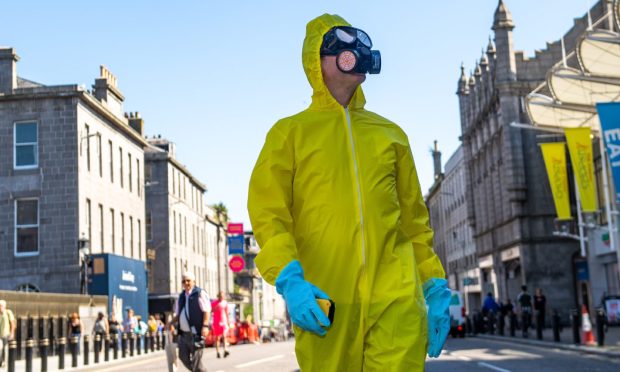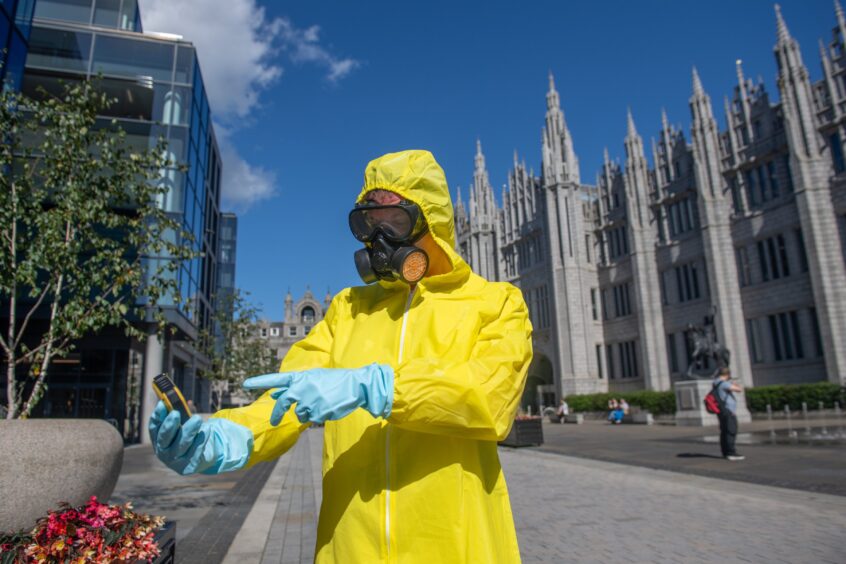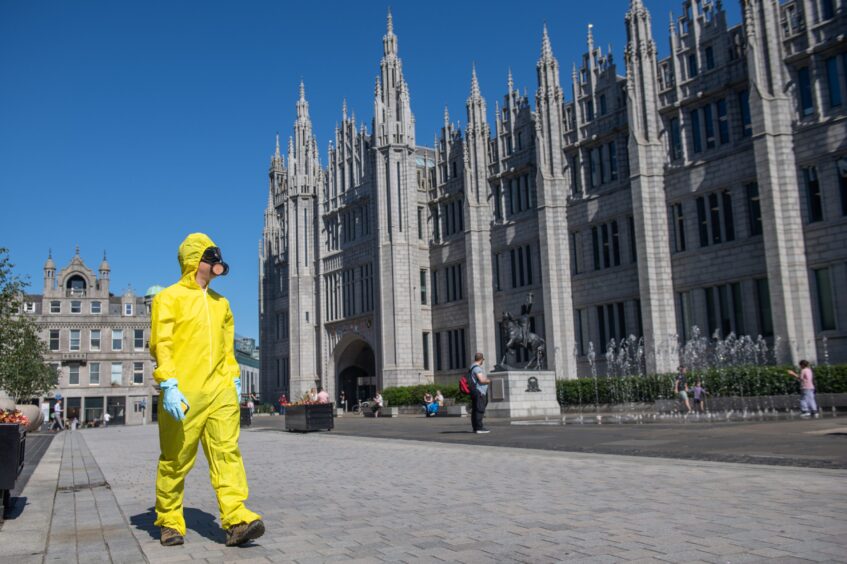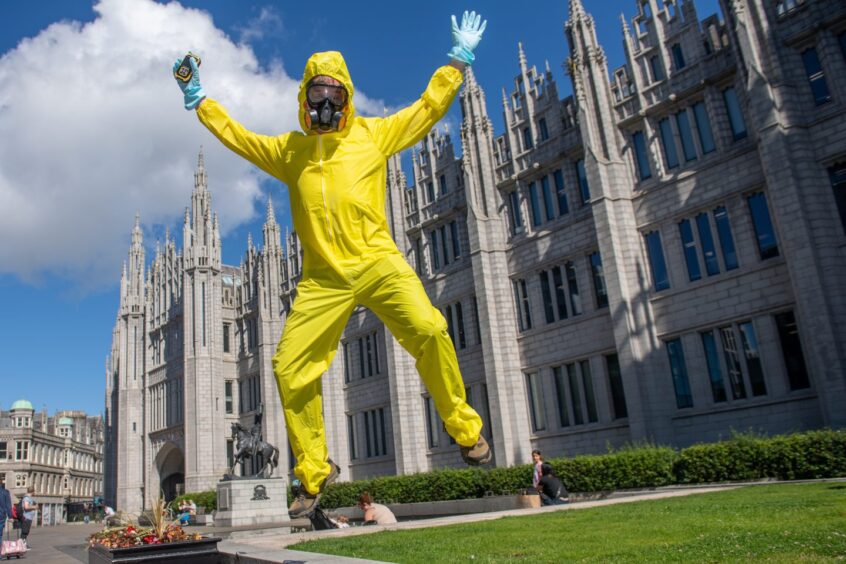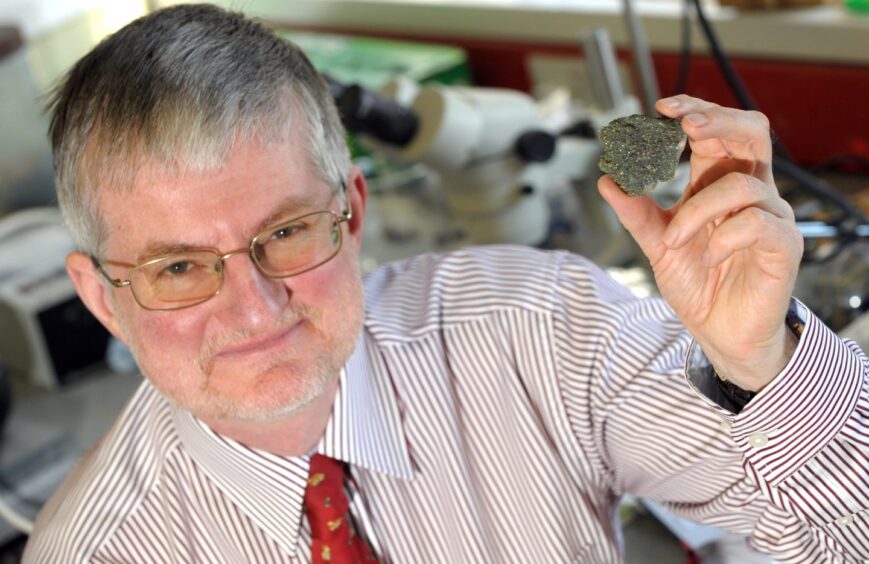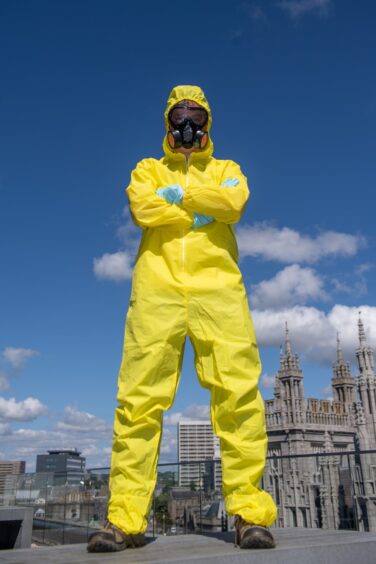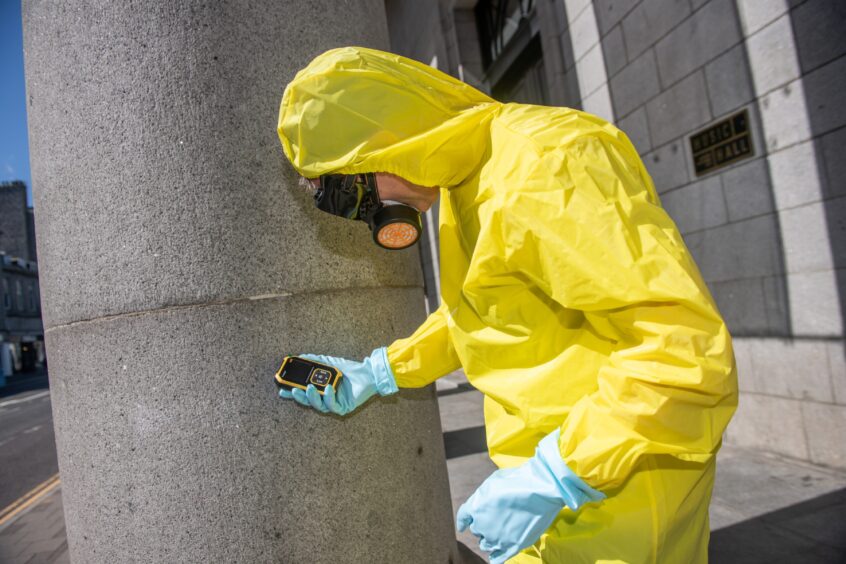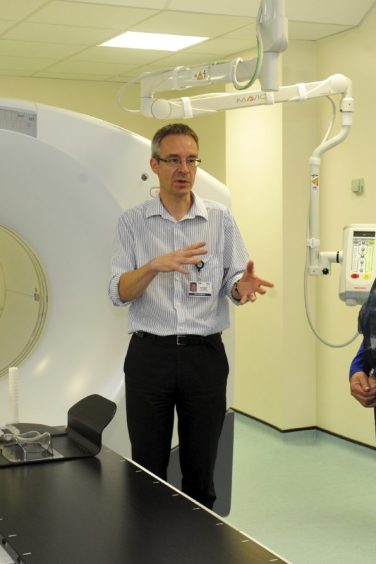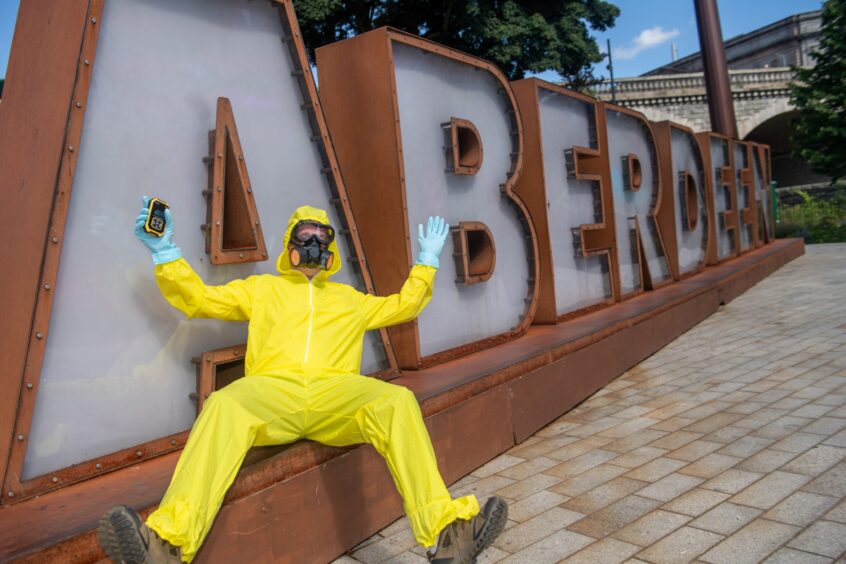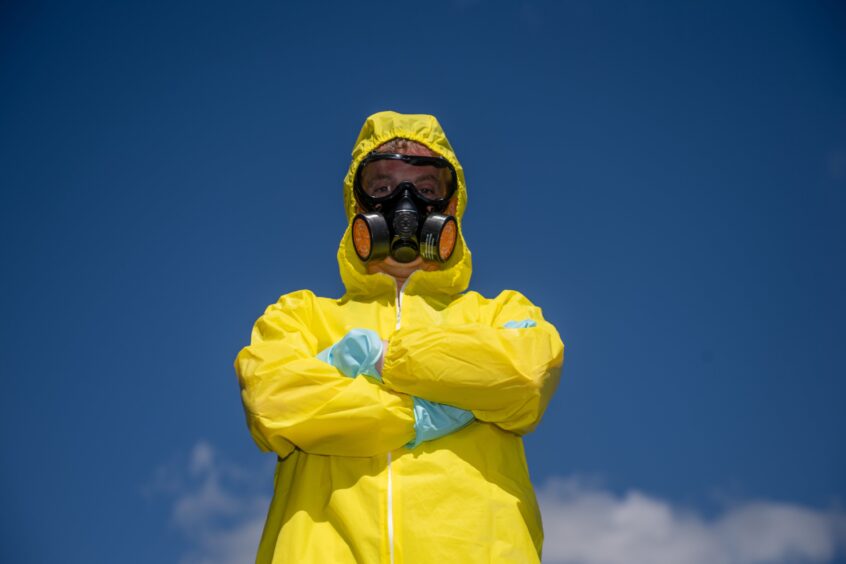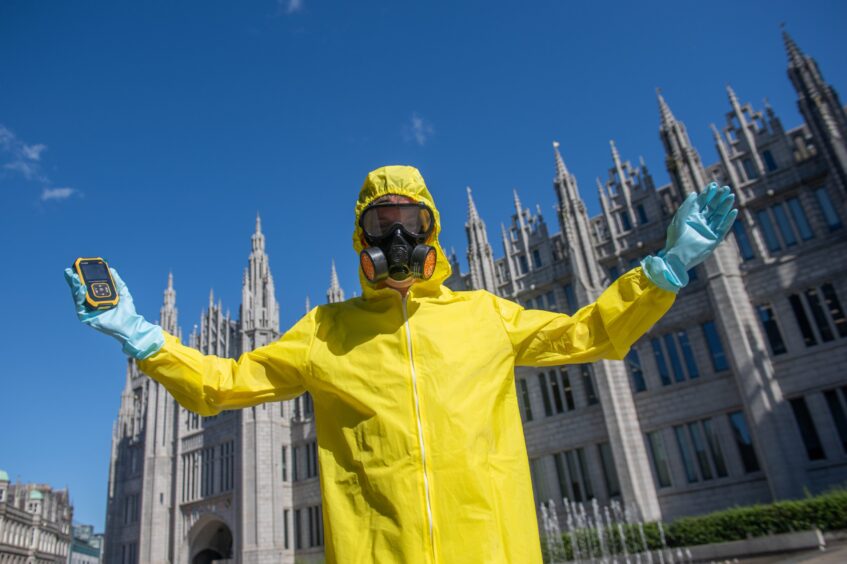Is Aberdeen one of the world’s most radioactive cities?
It’s a question sometimes asked by residents of the Granite City thanks to the uranium-rich stone the city is largely built with — and named after.
So, to find out whether the northern lights of old Aberdeen are the celestial occurrence we’ve been told they are or in fact the glow from irradiated locals I embarked on a quest.
Armed with a cheap Geiger counter from Amazon, and input from people who know a lot more about radiation than I do, I set out to tackle the urban legend and answer once and for all — how radioactive is Aberdeen?
From Westminster to the streets of Aberdeen
In 1979, then-Secretary of State for Scotland Harry Ewing was asked in Parliament about the “radioactive intensity” of Union Street’s granite buildings.
According to Hansard, the official transcript of parliamentary debates, Mr Ewing revealed that the background level of radiation in Aberdeen stood at about 150 millirems per year.
That’s a whole 50% higher than the UK average.
Here, then, is the first stage of my quest. If it’s radiation I’m looking for, my best bet will be Aberdeen’s many granite buildings.
My first stop is Marischal College, partly because it’s one of the biggest granite buildings in Aberdeen, but mainly because it’s right next to my office.
As tourists crisscross Broad Street snapping photos, I whip out my Geiger counter and take a few readings.
I’m no scientist — I’m sure that’s obvious by now — but did have the foresight to take some control readings in my granite-free office building.
There, the counter stood at about 0.08 micro-Sieverts per hour (uSv/h). A Sievert is a unit of radiation exposure dose that a person receives, so the reading represents the damage inflicted on the body every hour.
A dose of 0.08 an hour is typical and totally harmless.
Standing next to Marischal College, the gauge doesn’t go much higher; a steady 0.12, which is still very much within the realms of completely harmless.
Then, all of a sudden, something DOES happen. Jammed right up next to the giant granite blocks, the gauge creeps up to 0.17. Is this proof of Aberdeen’s radioactivity?
If so, it is short lived. Two seconds later the counter returns to 0.12.
As the wind swirls and tourists warily eye the man holding a Geiger counter against a building, I decide I need expert help.
A real lesson in radioactivity
John Parnell is talking to me on the phone but I can almost hear the giant eye roll he no doubt makes when I ask him about Aberdeen’s radioactivity.
“Yes, that’s something that journalists return to every few years,” he says, making me feel very small indeed.
Still, the genial geology professor at Aberdeen University good-naturedly answers all of my questions and doesn’t once tell me to stop wasting his time.
“All granites have a certain amount of uranium in them, which is the source of radioactivity,” Professor Parnell explains, speaking as he might to a young child or a golden retriever.
“And if you have buildings that are made of some granites, then they will give off a certain amount of the radioactive gas radon.”
It is this radon — produced as the granite slowly breaks down — that is the source of the radioactivity, the professor says. And it is the radon that means Aberdeen is more radioactive that other parts of the UK.
However, as a radioactive city, it only plays in the minor leagues. Cup Winners Cup as opposed to Champion’s League, you might say.
Cornwall, Prof Parnell continues, is the real radiation capital of the UK thanks to higher levels of uranium in its granite.
Some houses there have radon detectors in their basements to guard against radon build-up, though Professor Parnell downplays even those risks.
“Unless you spend your whole life tucked away in a cellar, there really isn’t anything to worry about,” he says.
Peppa Pig and a surprise at the Music Hall
Back on Aberdeen’s streets, my radiation search is faltering.
I get strange looks outside the granite-faced Sheriff Court but nothing on the Geiger counter, no matter how close I stand.
Next stop is HMT on Rosemount Viaduct, one of Aberdeen’s finest granite buildings. The theatre is advertising Peppa Pig’s Fun Day Out, and all I can think of is rows of children being zapped with radiation.
No need to worry, though. According to my trusty Geiger counter, HMT is a radiation-free zone. They need to start putting that on their posters.
It is a different story round the corner at the Music Hall on Union Street.
Amid the Deliveroo and Uber Eats couriers who hang out on the venue’s steps, my Geiger counter records the biggest spike of the day — 0.29 uSv/h!
I should probably point out that this is still very much within safe limits, but where’s the fun in that?
And anyway, my excitement at the spike was quickly tempered by the reading eventually dropping back to 0.07. In fact, no matter where I stood on Union Street the counter refused to budge.
Granite Mile, my foot.
Time to speak to another expert.
More lessons and our radiation ‘fear’
Fergus McKiddie is a consultant clinical scientist in Aberdeen Royal Infirmary’s nuclear medicine department.
It is a great-sounding title, but one that can cause issues.
You see, nuclear medicine uses radioactive tracers to track bodily functions to help treat and diagnose diseases.
The term ‘nuclear’ puts some of patients ill at ease, especially parents of children being tested.
“They get a letter saying ‘nuclear medicine’ and they think, ‘Oh my God’,” Fergus says. “The hard part sometimes is trying to explain the comparative risks. It’s only equivalent to a few extra weeks of background radiation.”
It seems humans have an overexaggerated sense of how dangerous radiation is.
Fergus puts that down to “some of the press things”, which could mean me but hopefully has more to do with movies and TV shows such as the fantastic Chernobyl, which depicted the very real dangers of a nuclear-reactor meltdown and gave me radiation nightmares for weeks.
Is obesity more dangerous than a nuclear bomb?
But there’s even a chance we overestimate the radiation dangers of nuclear disasters, and even nuclear bombs, especially when compared against other health risks.
A 2007 study claimed that the radiation exposures experienced by the most exposed group of survivors of the atomic bombs at Hiroshima and Nagasaki led to an average loss of life expectancy “significantly lower” than that caused by severe obesity or active smoking.
The same study also found that people who have — unofficially — returned to the live in the exclusion zone around Chernobyl “may actually have a lower health risk from radiation than they would have if they were exposed to the air pollution health risk in a large city such as nearby Kyiv”.
Fergus says some of these studies are based on guesswork so may not be entirely accurate.
“Nobody was walking around [in Hiroshima and Nagasaki] with a dose meter on to see what they were exposed to,” he warns.
But he does agree that we often put too much emphasis on external risks at the expense of those we can control.
“One of lectures I do with students on our MSc course, I list the different cancers and what the risks are,” he says. “I mean, obesity is in just about every one of them.”
A nice, healing radiation bath
Professor Parnell is even more upbeat about radiation. He points out that humans have evolved alongside the planet’s background radiation, so are more than used to the effects.
On the east coast of Brazil, for example, people bury themselves in the area’s naturally radioactive sand for its perceived health benefits. Apparently, they can feel the tingling from the radioactivity.
“If people are willing to bury themselves in radioactive sands,” the professor says, “then that tells you that it’s not quite the problem that we sometimes perceive.”
Beyond Aberdeen in our search for radiation
My quest is nearly over. Both Professor Parnell and Fergus tell me that if its radiation I’m after, then I should head out to Deeside. Aberdeen is built on granite but lacks the geological fissures that allow the radon to escape.
Banchory, however, has granite with such elevated levels of uranium that it was chosen by the Scottish Government in 2015 as a potential site for deep geothermal energy production.
It also has fissures in the bed rock. Here, finally, was an opportunity to record some highly dangerous levels of radiation.
Or not. I drove around the beautiful Banchory countryside for an hour and found nothing. Defeated, I went to a local cafe and had a very nice lunch.
